Portrait
August 30th, 2010
Been Reading
April 18th, 2010

Been reading Cohen:
THIS ISN’T CHINA
Hold me close
and tell me what the world is like
I don’t want to look outside
I want to depend on your eyes
and your lips
I don’t want to feel anything
but your hand
on the old raw bumper
I don’t want to feel anything else
If you love the dead rocks
and the huge rough pine trees
Ok I like them too
Tell me if the wind
makes a pretty sound
I’ll close my eyes and smile
Tell me if it’s a good morning
or a clear morning
Tell me what the fuck
kind of morning it is
and I’ll buy it
And get the dog
to stop whining and barking
This isn’t China
nobody’s going to eat it
Ok go if you must
I’ll create the cosmos
by myself
I’ll let it all stick to me
every dismal pine cone
every boring pine needle
And I’ll broadcast my affection
from this shaven dome
360 degrees
to all the dramatic vistas
to all the mists and snows
that moves across
the shining mountains
to the women bathing
in the stream
and combing their hair
on the roofs
to the voiceless ones
who have petitioned me
from their surprising silence
to the poor in the heart
though they be rich
to all the thought-forms
and leaking mental objects
that you get up here
at the end of your ghostly life
And I’ve been reading Donald Barthelme:
The Balloon
The balloon, beginning at a point on Fourteenth Street, the exact location of which I cannot reveal, expanded northward all one night, while people were sleeping, until it reached the Park. There, I stopped it; at dawn the northernmost edges lay over the Plaza; the free-hanging motion was frivolous and gentle. But experiencing a faint irritation at stopping, even to protect the trees, and seeing no reason the balloon should be allowed to expand upward, over the parts of the city it was already covering, into the “air space” to be found there, I asked the engineers to see to it. This expansion took place throughout the morning, soft imperceptible sighing of gas through the valves. The balloon then covered forty-five blocks north-south and an irregular area east-west, as many as six crosstown blocks on either side of the Avenue in some places. This was the situation, then.
But it is wrong to speak of “situations,” implying sets of circumstances leading to some resolution, some escape of tension; there were no situations, simply the balloon hanging there — muted heavy grays and browns for the most part, contrasting with the walnut and soft yellows. A deliberate lack of finish, enhanced by skillful installation, gave the surface a rough, forgotten quality; sliding weights on the inside, carefully adjusted, anchored the great, vari-shaped mass at a number of points. Now we have had a flood of original ideas in all media, works ofsingular beauty as well as significant milestones in the history of inflation, but at that moment, there was only this balloon, concrete particular, hanging there.
There were reactions. Some people found the balloon “interesting.” As a response, this seemed inadequate to the immensity of the balloon, the suddenness of its appearance over the city; on the other hand, in the absence of hysteria or other societally-induced anxiety, it must be judged a calm, “mature” one. There was a certain amount of initial argumentation about the “meaning” of the balloon; this subsided, because we have learned not to insist on meanings, and they are rarely even looked for now, except in cases involving the simplest, safest phenomena. It was agreed that since the meaning of the balloon could never be known absolutely, extended discussion was pointless, or at least less purposeful than the activities of those who, for example, hung green and blue paper lanterns from the warm gray underside, in certain streets, or seized the occasion to write messages on the surface, announcing their availability for the performance of unnatural acts, or the availability of acquaintances.
Daring children jumped, especially at those points where the balloon hovered close to a building, so that the gap between balloon and building was a matter of a few inches, or points where the balloon actually made contact, exerting an ever-so-slight pressure against the side of a building, so that balloon and building seemed a unity. The upper surface was so structured that a “landscape” was presented, small valleys as well as slight knolls, or mounds; once atop the balloon, a stroll was possible, or even a trip, from one place to the another. There was pleasure in being able to run down an incline, then up the opposing slope, both gently graded, or in making a leap from one side to the other. Bouncing was possible MAKE THIS BIG, because of the pneumaticity of the surface, or even falling, if that was your wish. That all these varied motions, as well as others, were within one’s possibilities, in experiencing the “up” side of the balloon, was extremely exciting for children, accustomed to the city’s flat, hard skin. But the purpose of the balloon was not to amuse children.
Too, the number of people, children and adults, who took advantage of the opportunities described was not so large as it might have been; a certain timidity, lack of trust in the balloon, was seen. There was, furthermore, some hostility. Because we had hidden the pumps, which fed helium to the interior, and because the surface was so vast that the autorities could not determine the point of entry — that is, the point at which the gas was injected — a degree of frustration was evidenced by those city officers into whose province such manifestations normally fell. The apparent purposelessness of the balloon was vexing (as was the fact that it was “there” at all). Had we painted, in great letters, “LABORATORY TESTS PROVE” or “18% MORE EFFECTIVE” on the sides of the balloon, this difficulty would have been circumvented. But I would not bear to do so. On the whole, these officers were remarkably tolerant, considering the dimensions of the anomaly, this tolerance being the result of, first, secret tests conducted by night that convinced them that little or nothing could be done in the way of removing or destroying the balloon, and, secondly, a public warmth that arose (not uncolored by touches of the aforementioned hostility) toward the balloon, from ordinary citizens.
As a single balloon must stand for a lifetime of thinking about balloons, so each citizen expressed, in the attitude he chose, a complex of attitudes. One man might consider that the balloon had to do with the notion sullied, as in the sentence, The big balloon sullied the otherwise clear and radiant Manhattan sky. That is, the balloon was, in each man’s view, an imposture, something inferior to the sky that had formerly been there, something interposed between the people and their “sky.” But in fact it was January, the sky was dark and ugly; it was not a sky you could look up into, lying on your back in the street, with pleasure, unless pleasure, for you, proceeded from having been threatened, from having been misused. And to the underside of the balloon was a pleasure to look up into, we had seen to that, muted grays and browns for the most part, contrasted with walnut and soft, forgotten yellows. And so, while this man was thinking sullied, still there was an admixture of pleasurable cognition in his thinking, struggling with the original perception.
Another man, on the other hand, might view the balloon as if it were part of a system of unanticipated rewards, as when one’s employer walks in and says, “Here, Henry, take this package of money I have wrapped for you, because we have been doing so well in the business here, and I admire the way you bruise the tulips, without which bruising your department would not be a success, or at least not the success that it is.” For this man the balloon might be a brilliantly heroic “muscle and pluck” experience, even if an experience poorly understood.
Another man might say, “Without the example of –, it is doubtful that — would exist today in its present form,” and find many to agree with him, or to argue with him. Ideas of “bloat” and “float” were introduced, as well as concepts of dream and responsibility. Others engaged in remarkably detailed fantasies having to do with a wish either to lose themselves in the balloon, or to engorge it. The private character of these wishes, of their origins, deeply buried and unknown, was such that they were not much spoken of; yet there is evidence that they were widespread. It was also argued that what was important was what you felt when you stood under the balloon; some people claimed that they felt sheltered, warmed, as never before, while enemies of the balloon felt, or reported feeling, constrained, a “heavy” feeling.
Critical opinion was divided:
“monstrous pourings”
“harp”
XXXXXXX “certain contrasts with darker portions”
“inner joy”
“large, square corners”
“conservative eclecticism that has so far governed modern balloon design”
:::::: “abnormal vigor”
“warm, soft lazy passages”
“Has unity been sacrificed for a sprawling quality?”
“Quelle catastrophe!”
“munching”
People began, in a curious way, to locate themselves in relation to aspects of the balloon: “I’ll be at that place where is dips down into Forty-seventh Street almost to the sidewalk, near the Alamo Chile House,” or, “Why don’t we go stand on top, and take the air, and maybe walk about a bit, where it forms a tight, curving line with the facade of the Gallery of Modern Art–” Marginal intersections offered entrances within a given time duration, as well as “warm, soft, lazy passages” in which . . . But it is wrong to speak of “marginal intersections,” each intersection was crucial, none could be ignored (as if, walking there, you might not find someone capable of turning your attention, in a flash, from old exercises to new exercises, risks and escalations). Each intersection was crucial, meeting of balloon and building, meeting of balloon and man, meeting of balloon and balloon.
It was suggested that what was admired about the balloon was finally this: that it was not limited, or defined. Sometimes a bulge, blister, or sub-section would carry all the way east to the river on its own initiative, in the manner of an army’s movements on a map, as seen in a headquarters remote from the fighting. Then that part would be, as it were, thrown back again, or would withdraw into new dispositions; the next morning, that part would have made another sortie, or disappeared altogether. This ability of the balloon to shift its shape, to change, was very pleasing, especially to people whose lives were rather rigidly patterned, persons to whom change, although desired, was not available. The balloon, for the twenty-two days of its existence, offered the possibility, in its randomness, of mislocation of the self, in contradistinction to the grid of precise, rectangular pathways under our feet. The amount of specialized training currently needed, and the consequent desirability of long-term commitments, has been occasioned by the steadily growing importance of complex machinery, in virtually all kinds of operations; as this tendency increases, more and more people will turn, in bewildered inadequacy, to solutions for which the balloon may stand as a prototype, or “rough draft.”
I met you under the balloon, on the occasion of your return from Norway; you asked if it was mine; I said it was. The balloon, I said, is a spontaneous autobiographical disclosure, having to do with the unease I felt at your absence, and with sexual deprivation, but now that your visit to Bergen has been terminated, it is no longer necessary or appropriate. Removal of the balloon was easy; trailer trucks carried away the depleted fabric, which is now stored in West Virginia, awaiting some other time of unhappiness, some time, perhaps, when we are angry with one another.
– – – – – – – – – –
And I have been reading Mordecai Richler who is a part of our tome now, and I’ve been reading Beckett and Bukowski (who has too many incredible poems to simply pick one, and as such will be represented by a painting of his own):
And lastly, I have been reading a Polish poet, Zbigniew Herbert:
INSCRIPTION [by Zbigniew Herbert]
You look at my hands
they are weak—you say—as flowers
you look at my mouth
too small to utter: the world
—let us sway on a moment’s stem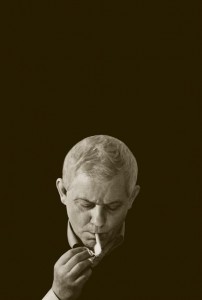
let us drink the wind
let us watch our eyes setting
the lilies that fester smell sweetest
the shape of ruins dulls the senses
there’s a flame in me that thinks
and a wind for fire and for sails
My hands are impatient
I can
sculpt a friend’s
head out of air
I recite a poem I’d like to
translate into Sanskrit
or a pyramid:
when the stars’ source dies
we will light up the nights
when the wind turns to stone
we will churn up the air
Saint Patrick’s Day
March 20th, 2010
Nietzsche
March 20th, 2010
‘Alas, what are you after all my written and painted thoughts! It was not long ago that you were still so colorful, young, and malicious, full of thorns and secret spices–you made me sneeze and laugh–and now? You have already taken off your novelty, and some of you are ready, I fear, to become truths: they already look so immortal, so pathetically decent, so dull. And has it ever been different? What things do we copy, writing and painting, we mandarins with Chinese brushes, we immortalizers of things that can be written–what are the only things we are able to paint? Alas, always only what is on the verge of withering and losing its fragrance! Alas, always only storms that are passing, exhausted, and feelings that are autumnal and yellow! Alas, always only birds that grew weary of flying and flew astray and now can be caught by our hand! We immortalize what cannot live and fly much longer–only weary and mellow things! And it is only your afternoon, you, my written and painted thoughts, for which I alone have colors, many colors perhaps, many motley browns and greens and reds: but nobody will guess from it how you looked in your morning, you sudden sparks and wonders of my solitude, you my old beloved–wicked thoughts.’
Nietzsche
Pantoum
March 18th, 2010
February 24, 2010
In McSweeney’s #32, there was an attempt to revive dead or dusty forms of the written word. Among my favorites was the Pantoum:
PANTOUM
LIFE SPAN: C. 1400 AD-present; earlier in oral form
NATURAL HABITAT: Malaysia
CHARACTERISTICS: Repetitive, trancelike.
A western descendant of the Malay pantum, a pantoum is a poem composed in quatrains, in which the second and fourth lines of each stanza reappear (with small alterations) as the first and third lines of the next stanza, and the first and third lines of the first stanza return as the last and second lines, respectively, of the final stanza. There is no set length, rhyme scheme, or subject matter for a pantoum, and artful manipulation of the repeated lines is encouraged.
ex:
CRACKPOT ARCTIC OCTOPUS
a new pantoum by Nicky Beer
I want to show you my blueprints.
This is where I’m going to put up the pistons,
The silver horses. I’ve been dreaming of
Building a giant carousel underwater, you see.
This is where I’m going. To put up the pistons
Close by the sea-vents—risky, I know, but—
Building a giant carousel underwater! You see
Why it must be done. I try to keep calm,
Close by. The sea vents risk. I know but
Fucking and fighting in a green haze.
Why? It must be done. I try to keep clams
Quiet by drilling holes in their heads.
Fucking and fighting in a green haze
Will drive anyone quite crazy after a while.
Quite. By drilling holes in their heads,
The Eskimos released their demons into the sky.
Will drives anyone quite crazy. After a while
Down in the seabed it all became so clear to me.
The Eskimos released their demons. Into the sky?
Nonsense. They seeped into the ice,
Down in the seabed. It all came to me. So be clear—
This is not really what I wanted,
The nonsense they seeped into the ice,
Though I’ve made an amusement of it all the same.
This is not real: what I wanted,
The silver horses I’ve been dreaming of,
Though I’ve made an amusement of it. All the same,
I want to show you my blueprints.
I recently saw an amazing CD cover online for the band Six Gallery. The cover had an octopus holding two balloons, and I immediately thought of the Crackpot Arctic Octopus. I drew a picture:
I’d Catch My Breath If I Could Find It
a new pantoum by me
Seems like it’s street corners
where I white-out my weekends,
before I go downstairs
into the bars—into the basements.
While I wait out my weakness
I’d catch my breath if I could find it.
I search the bars—I search the basements,
I search weekdays that chase behind it.
In catching breath (if I could find it),
I picture: a spark on a gust of wind.
And in weak days that chase reminded
me: why don’t we dance? why don’t we sing?
You picture: a spark on a gust of wind.
A fire threaded in the breeze.
Me: Oh I don’t dance. You: Oh I don’t sing.
Oh all things tossed into the seas. . . .
Afire: threats. In the breeze—
and all those shaking ships are sinking.
After all the things I lost to the seas—
all those breaking blues are blinking.
And all those shaking ships are sinking
while I white-out my weekends.
And all those breaking blues are blinking
into the bars—into the basements.
Trost
March 18th, 2010
Trost
German to English Translation: Comfort
february six twenty ten at twelve after two on a saturday afternoon:
i
went
to the
new Art
Gallery on
Sunday night.
Built on the same
spot as the old one,
this new one is much
newer. World Class.
it’s all fluid and
wavy and
motion
and water
and aurora borealis.
I fell in love with
the blond girl behind
the coat check. I don’t remember specifically
what it was that I fell so in love with but
whatever it was it was deeper than a
well and had more water than the
ocean. Which I didn’t even
know was possible
(You know, until then).
From the third floor
I had to smile to
think that yes, yes lady
yes (!) the rolling metal outside
through the window pane
grid did remind me of
that silly river floating
through my gridlike
city with the
silly smile
on its
face.
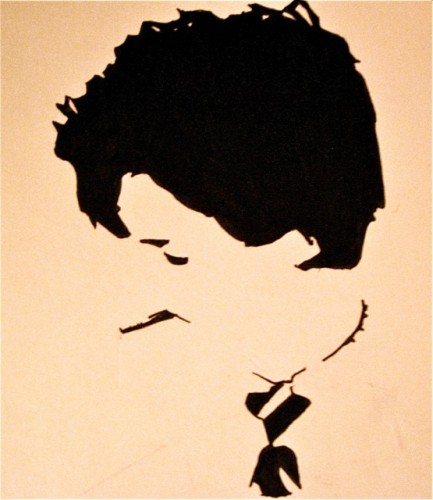

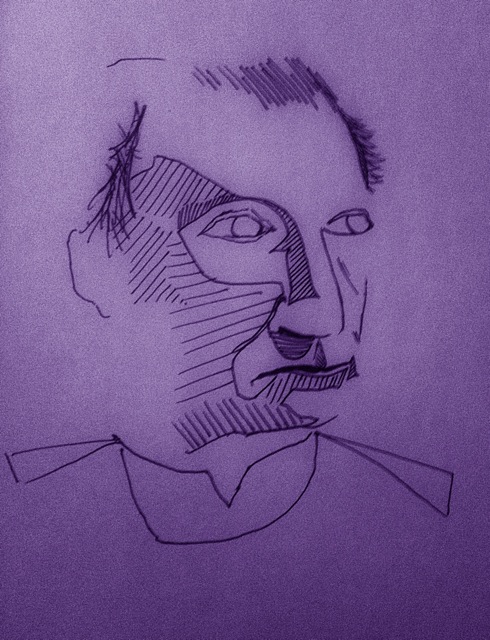

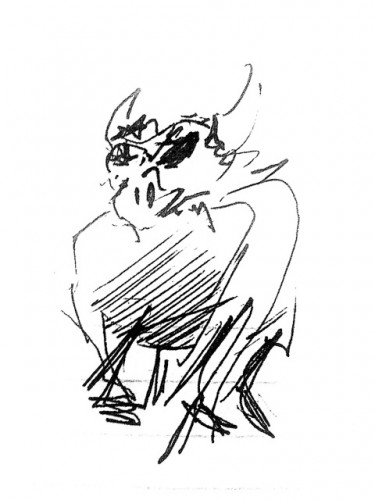
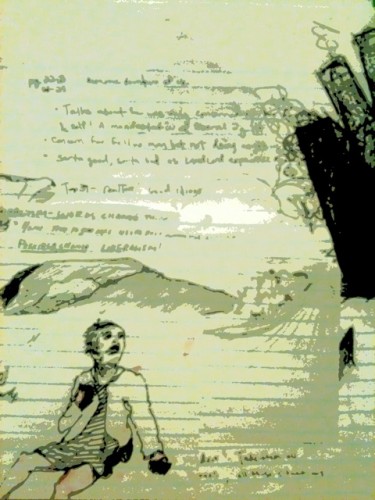

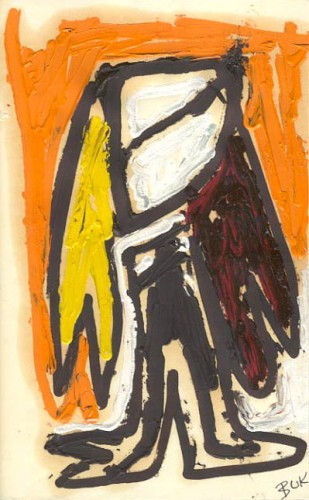


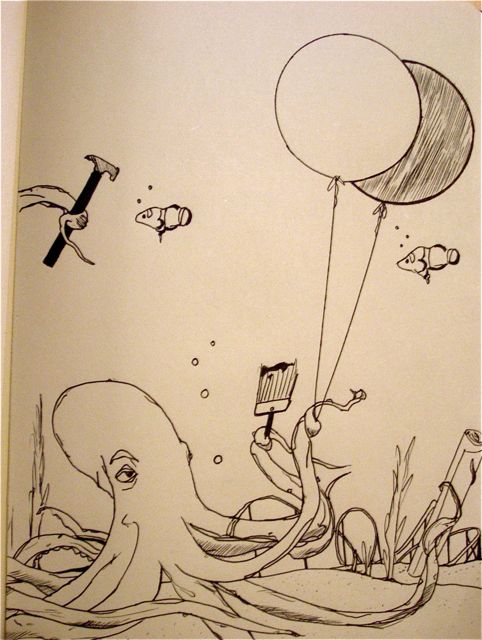

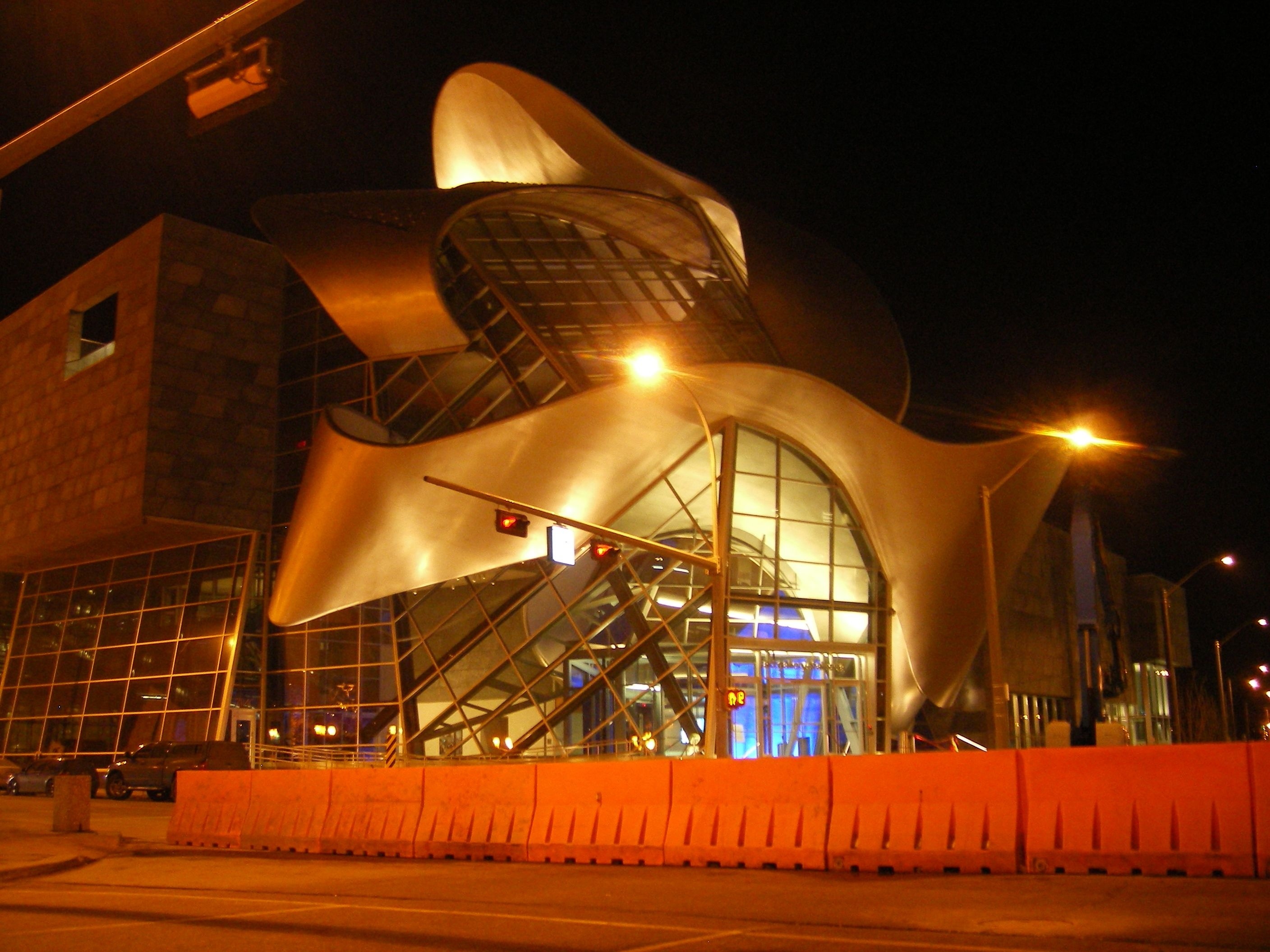
 Posts
Posts